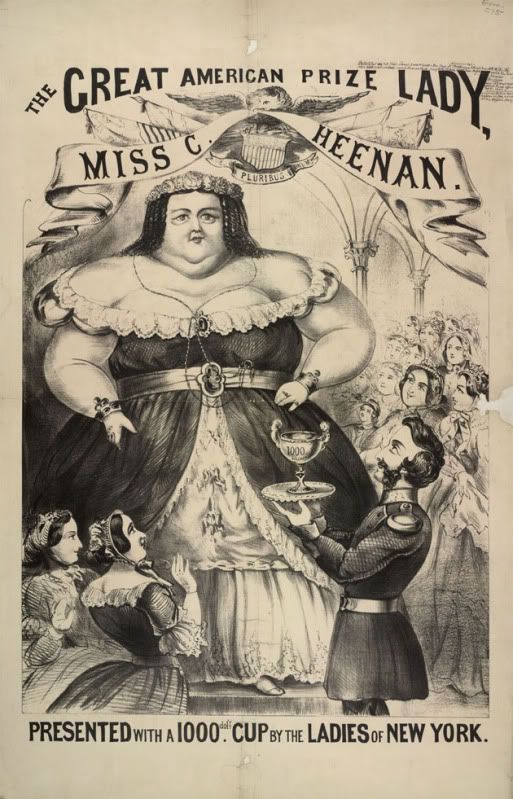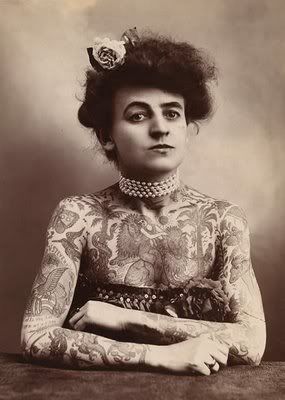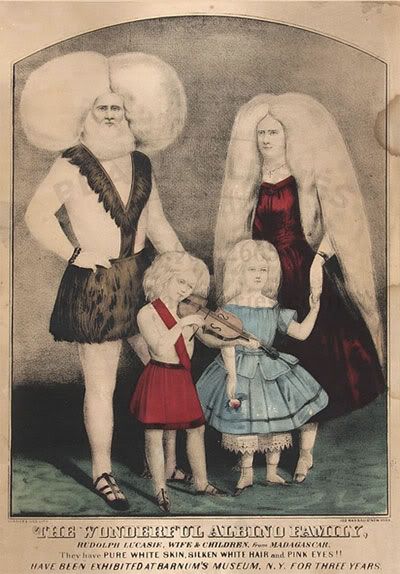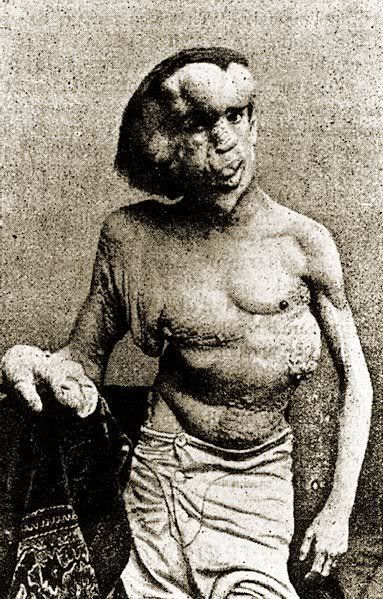


In 1884, Joseph Merrick was billed as the Elephant Man in London's East End. Merrick was born a healthy child and only showed signs of skin deformation at the age of five. Though Merrick got his nickname from the belief that he had elephantiasis, modern scientists have speculated that he suffered from a combination of neurofibromatosis type I and Proteus syndrome. Unable to keep a job, Merrick accepted his fate as a human novelty and allowed himself to be exhibited as such. Merrick spent the last few years of his life in the hospital, as his condition worsened. Throughout his life, Merrick believed the cause of his affliction was due to maternal impression, the antiquated idea that the emotional experiences of pregnant women could have a lasting physical effect on their unborn children.

Click here for more antique images of tattooed people.
No comments:
Post a Comment